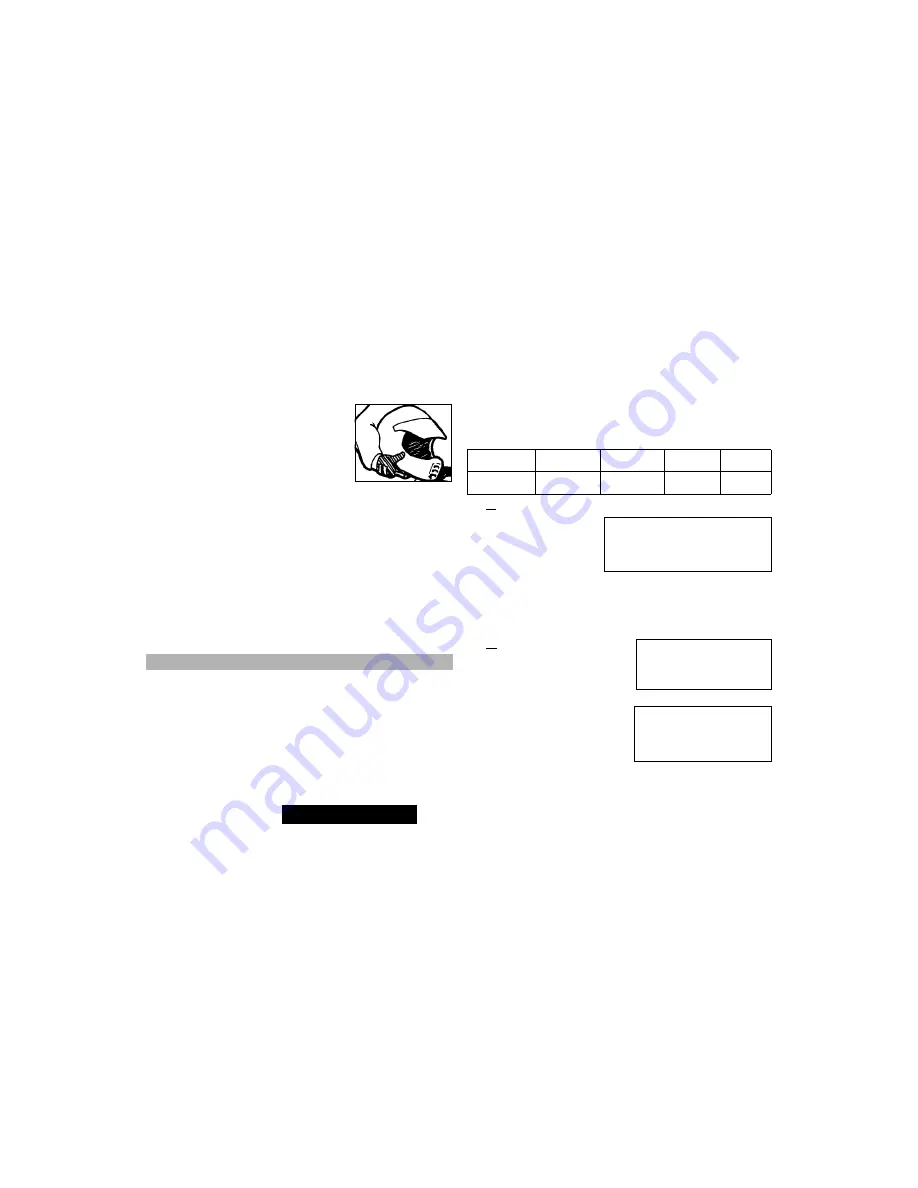
16
!
WARNING
Indicates a potential hazard that could result in a serious injury or death.
Prevention
These helmets should provide full-face pro-
tection.
If you drop or damage your helmet, get a new
one immediately. Your helmet may not protect
your head from injury if it has cracks, fissures,
or other damage to its outside or core padding.
Remember, your helmet won’t do you any
good if the chin strap isn’t fastened.
Eye Protection
Wear eye protection, such as goggles, to completely surround your
eyes to prevent getting dirt or other items in your eyes. Do not depend
on sunglasses for proper eye protection. Sunglasses are not recom-
mended; they don’t prevent objects from flying in through the sides.
Long Pants and Long Sleeved Shirt
The goal is to protect your body from branches, long grass, airborne
objects, or anything else that could scrape your skin. The more thick
and durable the material, the better protection it’ll provide. Riding
pants with kneepads, a jersey, and shoulder pads provide the best pro-
tection.
The second step in Prevention is checking the condition of your ATV.
Chances are good that you’ll be using your ATV in some rough ter-
rain, and there’s no way you want your brakes to go out when riding
downhill. You need to check the following parts on your ATV before
every ride.
1. Tires and Wheels
2. Controls and Cables
3. Lights and Electric
4. Oil and Fuel
5. Chassis
6. Miscellaneous Items
One easy way to remember what parts you need to check is by using
the acronym “T-CLOC.” It stands for:
1. TIRES AND WHEELS
Correct tire pressure is crucial.
Consult the Specifications sec-
tion of this Operator’s Manual
for tire pressure guidelines.
Incorrect tire pressure can
cause poor handling, instabil-
ity, and a loss of ATV control.
While checking the tire pressure, inspect the tread and sidewalls of
the tires for cracks, cuts, or other damage that could indicate they
need to be replaced.
2. CONTROLS AND
CABLES
With the engine running and brake
applied, check all transmission posi-
tions: forward, neutral, and reverse.
A. Brakes
Squeeze the hand brake lever. If it
feels soft or “squishy,” it could be
low on fluid or have a leak — refer
to the General Maintenance section
of this Operator’s Manual for instructions. Don’t use the ATV until
the brakes are operating normally.
Condition of the ATV
T
C
L
O
C
T
IRES
AND WHEELS
C
ONTROLS
AND CABLES
L
IGHTS AND
ELECTRIC
O
IL AND
FUEL
C
HASSIS
Check:
1. Tire pressure
2. Tire surface (tread and sidewalls)
Check:
1. Forward
2. Neutral
3. Reverse
Check:
1. Hand brake lever
2. Brake pedal
3. Brake lever lock
















































